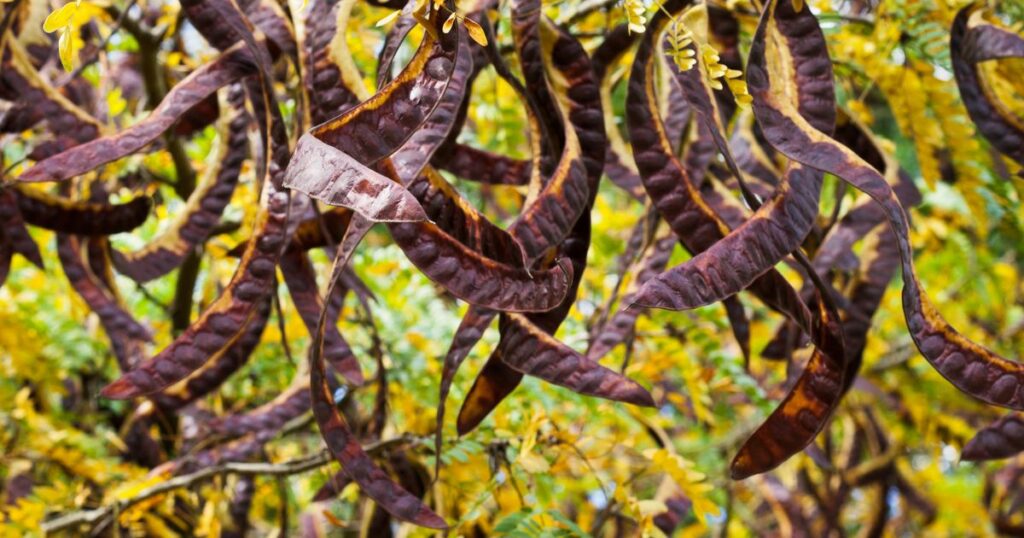What is wattleseed?
What is wattleseed? it’s a unique and versatile ingredient with a deep-rooted history in Australian Indigenous culture. Harvested from the seeds of various Acacia species native to Australia, wattleseed has been used for thousands of years by Indigenous Australians as a staple food source. This hardy seed offers a rich, nutty flavour with hints of coffee, chocolate, and hazelnut, making it ideal for both savoury and sweet dishes. As interest in native and sustainable ingredients grows globally, wattleseed has gained popularity among chefs and home cooks alike for its flavour, nutrition, and cultural significance.
Read also: 20 Very Exotic Spices of the Culinary World
A Brief History of Wattleseed
The use of wattleseed dates back tens of thousands of years, with Indigenous Australians collecting and grinding the seeds to make a type of flour for traditional bush bread, known as “Johnny Cakes.” Various Acacia species were utilised, each providing wattleseeds with distinct flavours and nutritional benefits. This ancient superfood was crucial in maintaining food security in arid regions, as wattleseed could be stored for extended periods and used as a reliable food source during droughts.
As European settlers arrived in Australia, the use of wattleseed declined, with native ingredients and Indigenous knowledge often overlooked. However, in recent years, the Australian native food movement has brought wattleseed back into the spotlight. Chefs and food enthusiasts now celebrate wattleseed as a symbol of cultural heritage and a sustainable ingredient with immense potential in global cuisine.
The Taste and Culinary Uses of Wattleseed
Wattleseed offers a deep, nutty flavour with earthy undertones, making it an exceptionally versatile ingredient. The flavour profile can vary slightly depending on the Acacia species and roasting process, but it’s generally described as having notes of roasted coffee, dark chocolate, hazelnut, and spice. Wattleseed can be used in both ground and whole seed forms, with each application lending unique qualities to dishes.
- Ground Wattleseed in Baking: One of the most popular uses of wattleseed is in baking, where it adds a warm, earthy flavour to bread, cakes, muffins, and biscuits. The flavour pairs beautifully with chocolate, vanilla, and spices, making it a favoured addition to desserts.
- Wattleseed in Beverages: Wattleseed’s coffee-like flavour has led to its use as a caffeine-free coffee substitute. It can be brewed as a hot drink, similar to coffee, or used as a flavouring in milkshakes and smoothies. The subtle bitterness complements both sweet and savoury flavours.
- Savoury Dishes and Sauces: Wattleseed can also add depth to savoury recipes, including sauces, marinades, and spice rubs for meats. Its nutty flavour enhances the richness of dishes like roasted vegetables, casseroles, and stews.
- Native Spice Blends: Wattleseed can be combined with other native spices such as lemon myrtle, pepperberry, and bush tomato to create unique spice blends, highlighting the distinctive flavours of Australian cuisine.
- Dairy and Ice Cream Creations: Its rich, chocolatey notes work well in ice creams, custards, and other creamy desserts, making it a popular choice in artisanal ice cream production. Wattleseed-infused dairy products offer a luxurious, exotic twist on classic flavours.
Nutritional Profile of Wattleseed
Wattleseed is not only flavourful but also highly nutritious. It’s packed with protein, dietary fiber, and essential minerals, making it a valuable addition to a balanced diet. Here’s a breakdown of some key nutritional benefits:
- High Protein Content: Wattleseed contains around 18-25% protein, which is particularly high for a plant-based ingredient. This makes it a great choice for those looking to increase their protein intake, especially in vegetarian and vegan diets.
- Low GI and Blood Sugar Control: The carbohydrate content in wattleseed has a low glycemic index (GI), meaning it’s digested slowly, helping to prevent spikes in blood sugar. This makes it suitable for individuals with diabetes or those looking to manage their blood sugar levels.
- Rich in Fiber: Dietary fiber is essential for digestive health, and wattleseed provides a good amount, supporting gut health and helping to regulate bowel movements.
- Vitamins and Minerals: Wattleseed is a source of essential minerals, including iron, zinc, magnesium, and potassium. These nutrients play vital roles in maintaining energy levels, immune function, and overall health.
Sustainability and the Environment
Acacia trees are well-suited to Australia’s harsh climate, with the ability to thrive in arid and semi-arid regions. Unlike many crops, wattleseed does not require large amounts of water or chemical fertilisers, making it an environmentally friendly choice. The cultivation and harvesting of wattleseed also support local Indigenous communities, promoting sustainable agricultural practices and preserving traditional knowledge.
Incorporating wattleseed into modern agriculture not only supports biodiversity but also offers a solution to food security in regions affected by climate change. As interest in sustainable ingredients grows, wattleseed is gaining recognition for its potential to contribute to global food systems while respecting Indigenous heritage and promoting environmental stewardship.
Health Benefits of Wattleseed
Beyond its impressive nutritional profile, wattleseed has been associated with several health benefits due to its rich antioxidant content and anti-inflammatory properties. Here’s how wattleseed may contribute to better health:
- Antioxidant Properties: The antioxidants in wattleseed help combat oxidative stress, which can damage cells and contribute to chronic diseases. Regular consumption of antioxidant-rich foods can promote overall health and reduce the risk of various conditions, including heart disease and cancer.
- Anti-Inflammatory Effects: Wattleseed contains compounds that may have anti-inflammatory effects, helping to reduce inflammation in the body. Chronic inflammation is linked to various health issues, and anti-inflammatory foods can play a role in supporting a balanced immune response.
- Energy and Satiety: Thanks to its high protein and fiber content, wattleseed provides lasting energy and can help with satiety, making it beneficial for weight management. Including wattleseed in meals can help reduce hunger and maintain stable energy levels.
- Digestive Health: The fiber in wattleseed supports digestive health by promoting regular bowel movements and providing prebiotics for beneficial gut bacteria. A healthy gut is essential for immune function, nutrient absorption, and overall well-being.
Harvesting and Preparation of Wattleseed
Harvesting wattleseed is a labor-intensive process, traditionally carried out by hand. The seeds are collected, cleaned, and roasted to bring out their distinctive flavour. Once roasted, wattleseed can be ground into a fine powder, which is commonly used in recipes. The roasting process not only enhances the flavour but also makes the nutrients in wattleseed more bioavailable.
Modern processing methods have made wattleseed more accessible, with commercial suppliers offering ground wattleseed, whole seeds, and even wattleseed extracts. As interest in native Australian ingredients continues to grow, wattleseed is becoming available in specialty stores and online, making it easier for people worldwide to experience this unique ingredient.
Cultural Significance and Indigenous Connection
Wattleseed holds profound cultural significance for Indigenous Australian communities. For thousands of years, it has been an essential food source and a symbol of resilience in arid landscapes. The knowledge surrounding wattleseed, from its culinary uses to its role in traditional medicine, is a testament to the deep connection between Indigenous Australians and their land.
Today, the resurgence of wattleseed is not only about celebrating its flavour and health benefits but also about honouring the cultural heritage and wisdom of Indigenous Australians. Efforts to incorporate wattleseed into mainstream cuisine often involve collaboration with Indigenous communities, ensuring that traditional knowledge is respected and preserved.
Incorporating Wattleseed into Modern Cuisine
With its rich flavour and impressive nutritional profile, wattleseed has found its way into diverse culinary applications beyond traditional Australian cuisine. Here are some creative ways to use wattleseed in modern cooking:
- Wattleseed Crusted Proteins: Use ground wattleseed as a crust for meats, fish, or tofu to add an earthy, nutty flavour and a unique texture.
- Wattleseed in Baked Goods: Add a spoonful of wattleseed to doughs or batters for muffins, pancakes, or bread to infuse them with a warm, chocolatey flavour.
- Smoothie Boost: Blend wattleseed powder into smoothies or milkshakes for an added depth of flavour and a boost of nutrients.
- Desserts and Confectionery: Wattleseed pairs wonderfully with chocolate, caramel, and vanilla in desserts such as cheesecakes, brownies, and truffles.
- Wattleseed Ice Cream: Create a unique ice cream flavour by infusing wattleseed into the custard base for a deliciously nutty, coffee-like taste.
Conclusion
Wattleseed is more than just an ingredient; it’s a symbol of cultural heritage, resilience, and sustainability. Its journey from a traditional bush food to a celebrated ingredient in modern cuisine is a testament to the versatility and richness of native Australian ingredients.
By embracing wattleseed, we can enjoy its unique flavour while supporting Indigenous communities and promoting environmentally sustainable food practices. From its ancient roots to its modern applications, wattleseed offers a taste of Australia’s rich culinary heritage and an opportunity to appreciate the wisdom and resilience of its people.
𐡸 𐡸 𐡸 𐡸 𐫱 𐡷 𐡷 𐡷 𐡷
Frequently asked questions
Wattleseed has a rich, nutty flavour with hints of coffee, chocolate, and hazelnut. It adds depth to both sweet and savoury dishes, making it a versatile ingredient.
Wattleseed can be used in various ways, including as a flour in baking, a spice in savoury dishes, or a flavouring in beverages. Its earthy flavour complements chocolate, vanilla, and spices.
Yes, wattleseed is packed with protein, dietary fiber, and essential minerals like iron, zinc, and magnesium, making it a nutritious addition to many diets.
Wattleseed has a low glycemic index, meaning it digests slowly, helping to prevent spikes in blood sugar levels. This makes it suitable for people managing blood sugar.
Wattleseed is available at specialty stores, especially those focusing on Australian native foods, and can also be purchased online. Look for ground wattleseed, whole seeds, or extracts.



